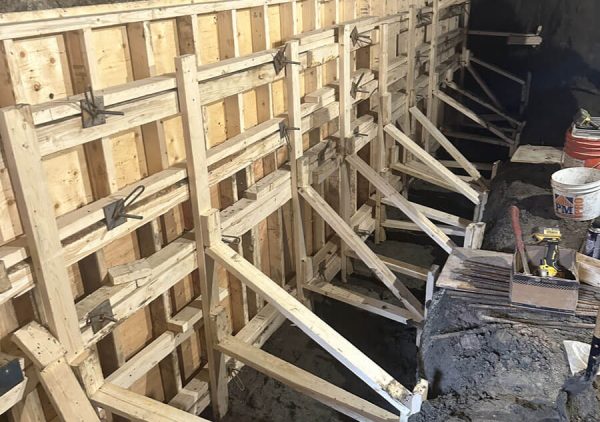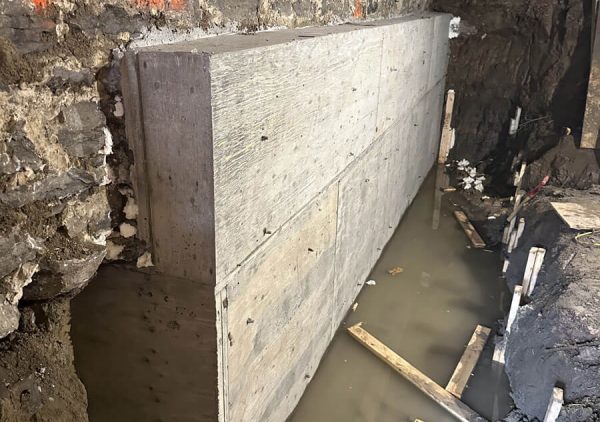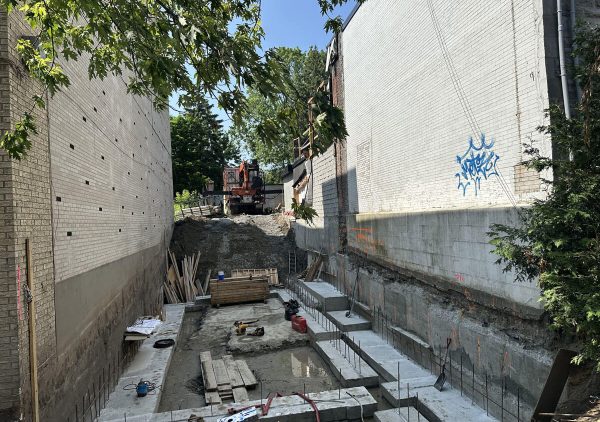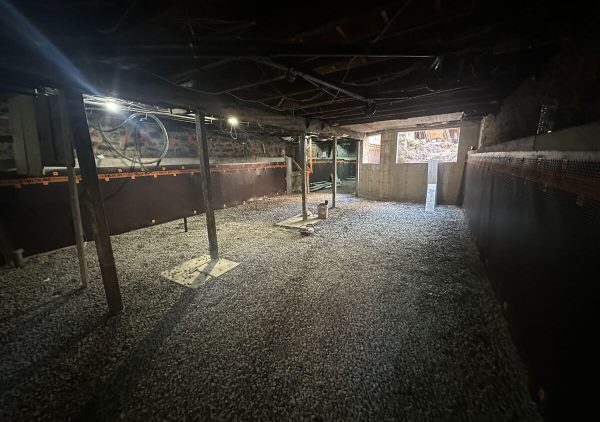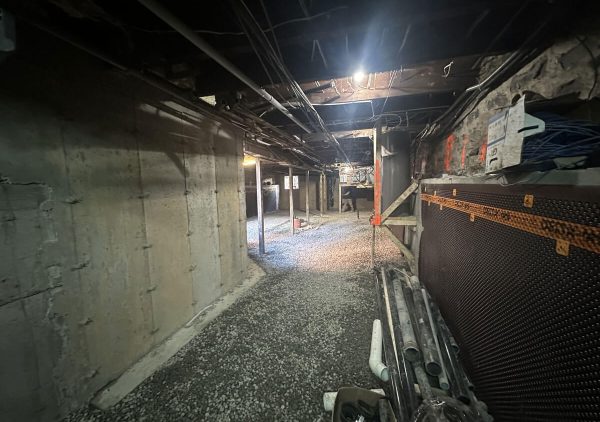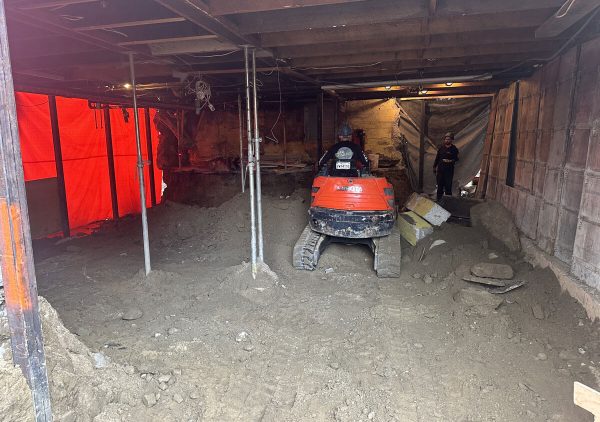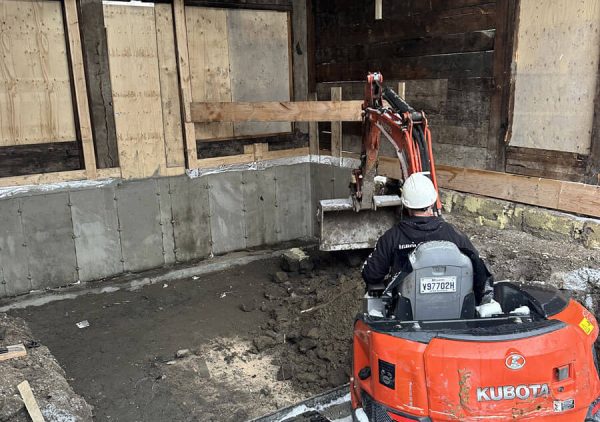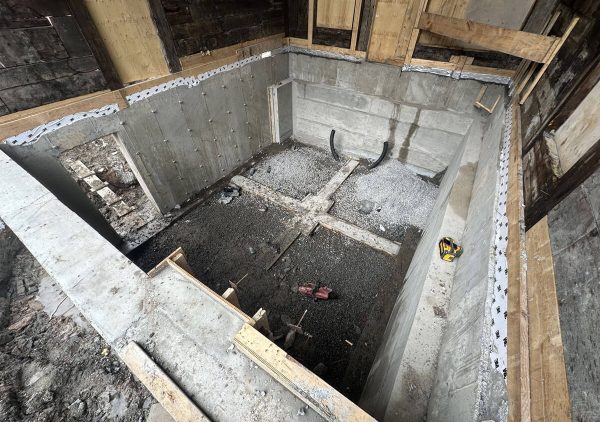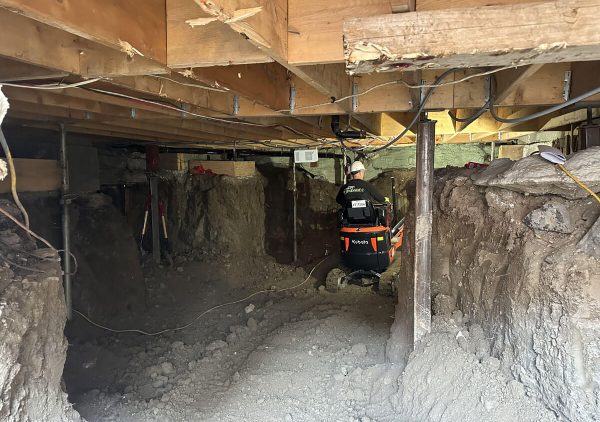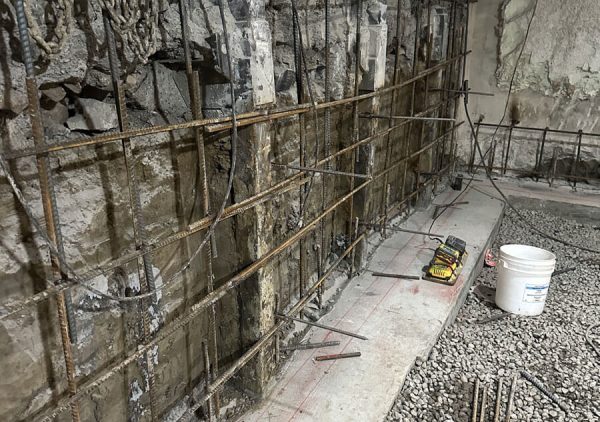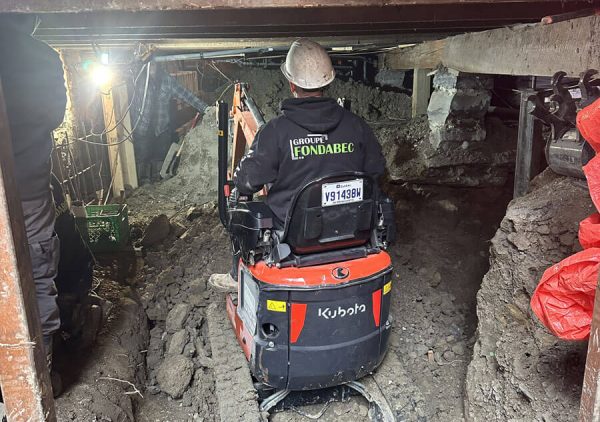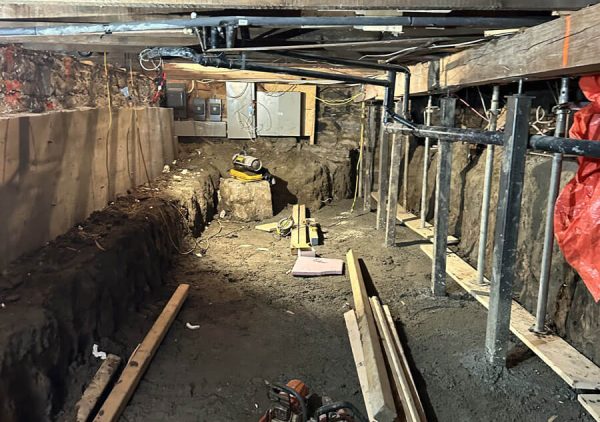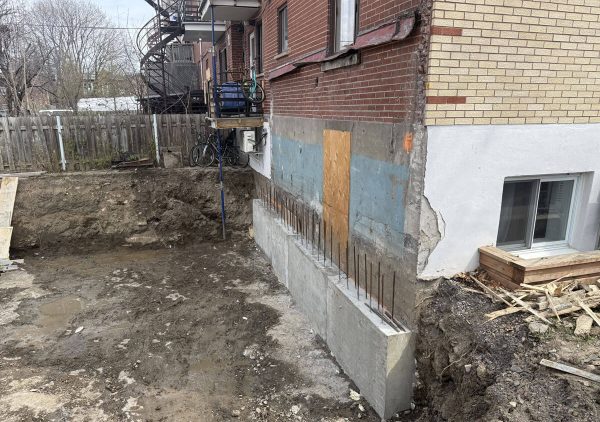Foundation underpinning
Transform your basement or stabilise your home with Fondabec
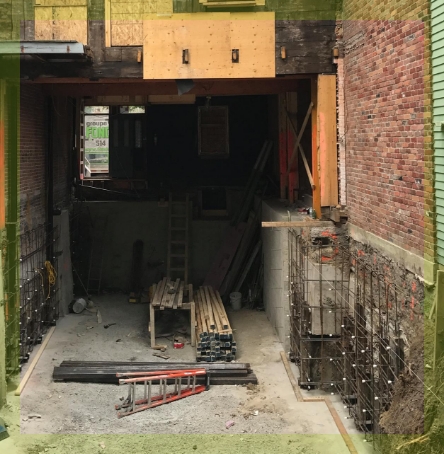
When should you consider underpinning?
Stabilise a weakened or unstable foundation
Gain living space without rebuilding
Protect your building during a neighbouring site or excavation
How do underpinning works proceed?
Each underpinning project is unique. Fondabec’s approach combines structural safety, respect for the existing building and engineering adapted to Quebec’s soils. We work with certified structural engineers to ensure every underpinning project complies with provincial standards.
Here are the key steps in a project:
Structural diagnosis and soil study
- Inspection of the foundation
- analysis of the soil (clay, rock, backfill)
Development of engineering plans and specifications
- Calculating loads and bearing points
- choosing techniques (piles, retaining wall, formwork…)
Temporary stabilisation of the building
- Shoring support
Actual underpinning work
- Excavation under the structure
- pouring new footings (walls or slabs)
- installing driven or jacked piles if necessary
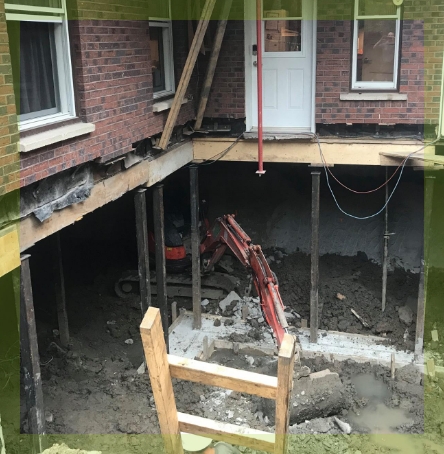
Waterproofing, drainage and finishing
- French drain
- waterproof membrane
- interior or exterior connections
Techniques used for underpinning at Fondabec
Localised underpinning beneath the foundation
otal excavation beneath the building
Addition of driven or jacked piles
What are the benefits of underpinning?
- Durable structural stabilisation
- reinforcement or correction of existing foundations
- creation of additional living space without raising the building
- avoids complete demolition
- significant property value enhancement
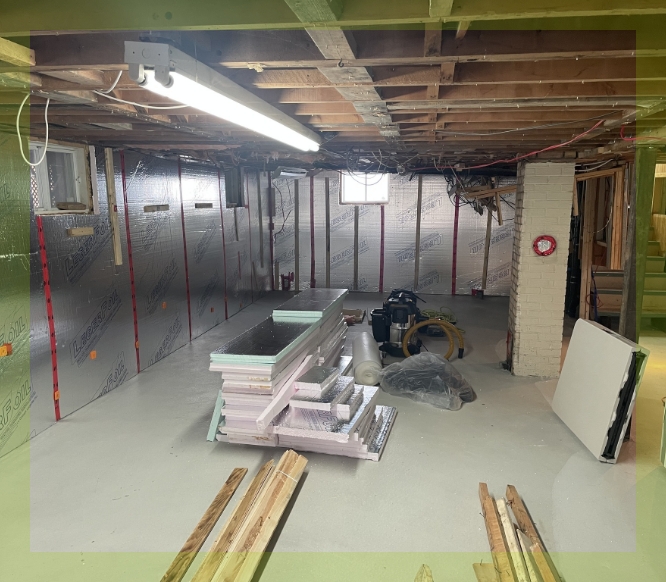

Do you need a permit or an engineer for underpinning work?
- plan signed by a structural engineer
- a permit from the municipality
- strict safety measures (shoring, retaining walls if necessary)
Need to expand a dwelling or replace a foundation?
For over 20 years, Fondabec has helped homeowners in Greater Montreal and throughout Quebec with their underpinning projects. Whether you are in Laval, Longueuil, Terrebonne, the North Shore, the South Shore or rural areas, our team travels quickly to assess your situation and offer the most durable solution.
Fill out this form or call us today!
FAQ
What is the difference between underpinning and a foundation replacement?
Can you live in the house during the work?
What is the average cost of underpinning?
How long does the work take?
For over 20 years, Fondabec has been assisting homeowners in Greater Montreal and throughout Quebec with their excavation projects.
- 957 Rue des Forges, Terrebonne, QC J6Y 0J9
- (514) 838-5379
- info@fondabec.ca
-
Monday to Saturday
7:00 am to 6:00 pm

